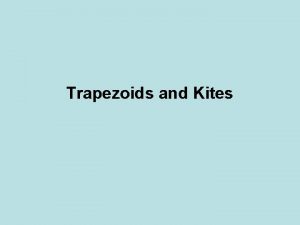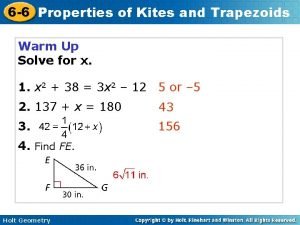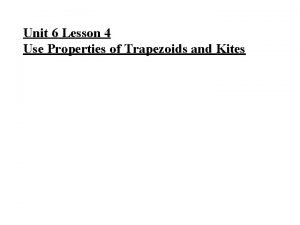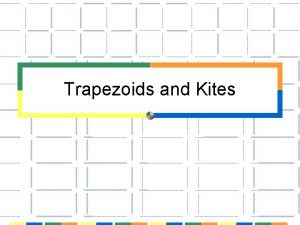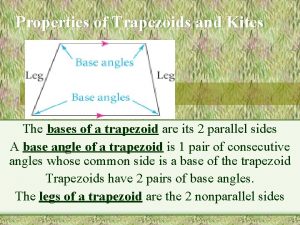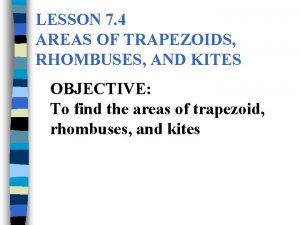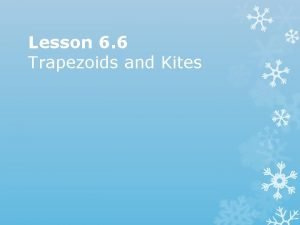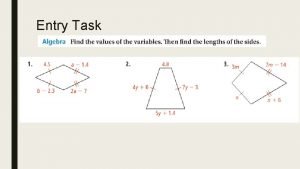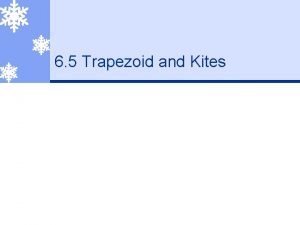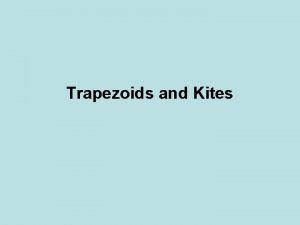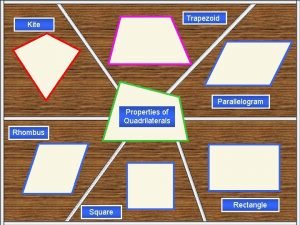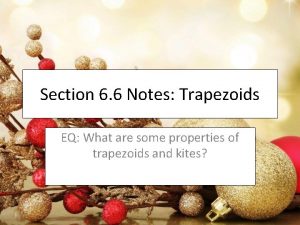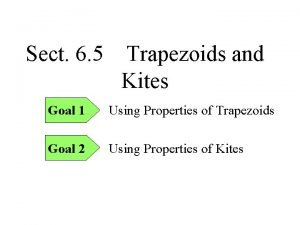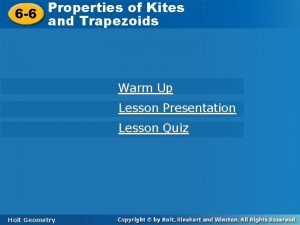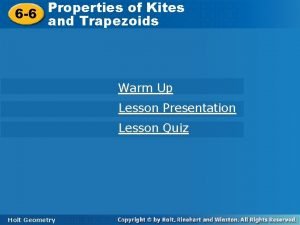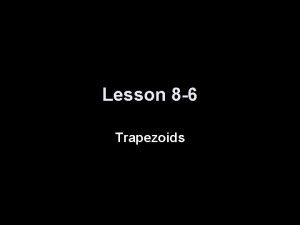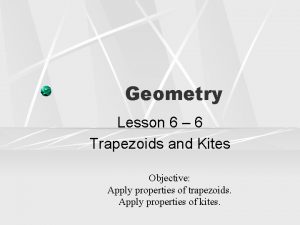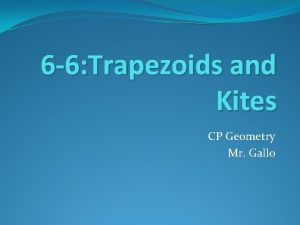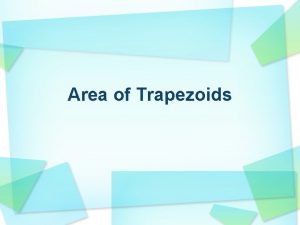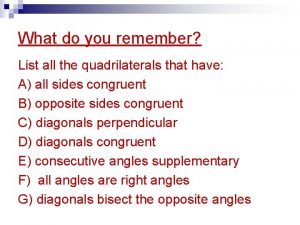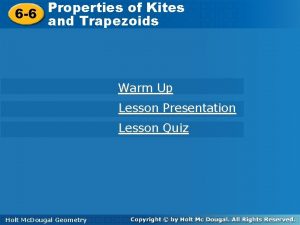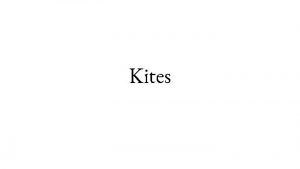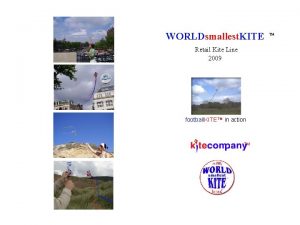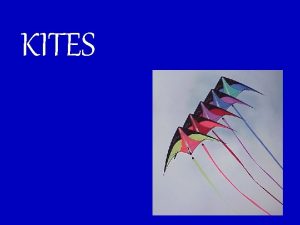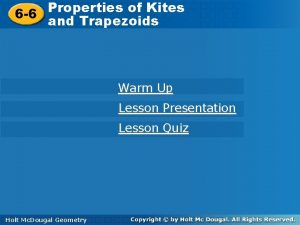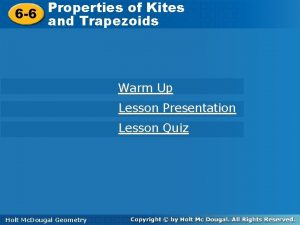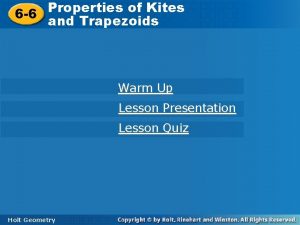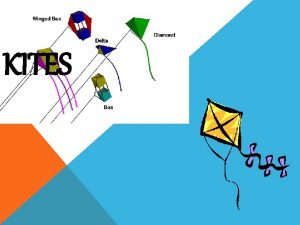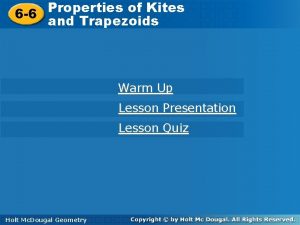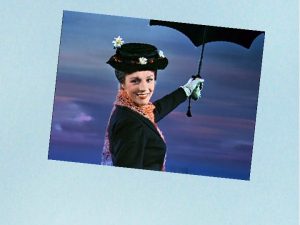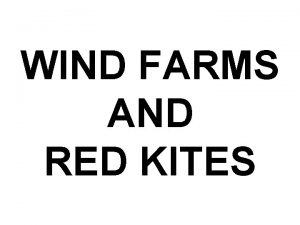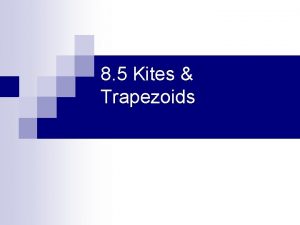The Kite The History of Kites and How



































- Slides: 35

The Kite The History of Kites and How Kites Influenced Technology

Way Back When? ……Kites were invented. • Some scholars think 1000 BC in China • Others think no way to determine where and when • Current thinking China and Malaysia • First documented 200 BC China Han Dynasty • Early accounts of kites exist in Korea, Thailand, Japan, New Zealand • India oldest festival celebrated for centuries • Early mention 1295 Europe - Marco Polo



Early Uses For The Kite • 200 BC Han general used kite to find correct distance to dig a tunnel (triangulation) • New Zealand Asia kite fishing • Asia- religious- Koreans released kites to take away bad luck from babies • Thailand- farmers flew kites- asked gods to make monsoon winds to prevent flooding rains • Toys and Celebrations

Han general Flying Kite

European Kite History • 1405 manuscript reference about kite flying in military • 1430 directions for making kites appear • 1589, 1643 books show to lift fireworks with kites • 1618 Middleburg, Holland an illustration shows children flying diamond kites • Kite is regarded as a toy in Europe

1700’s Kites-More Scientific And Begin To Influence Technology • 1749 Alexander Wilson (Scottish) uses kites to lift thermometers. Proves that temperature changes with altitude. • 1752 Ben Franklin experiments prove there is electricity in lightning. Modern scholars doubt the view that he personally held the kite string, probably would have killed him.

Franklin Flyin’

1800’s Kites on Steroids • 1804 George Cayley -concept of heavier than air flight, introduces idea of gliders • 1827 George Peacock uses kites to pull a carriage • 1847 Homan Walsh, age 10, flew kite across Niagara Gorge, first step in building a bridge • 1890’s Larwence Hargrave, Wright Brothers and others used cellular kites for lifting people and flight studies. • 1800’s many scientific studies involving kites.

Wright With Hargrave Design

1900’s Kite Uses Multiply • 1900 Guglielmo Marconi used a kite to lift antenna for historical radio link between Europe and North America • 1901 Coyne kite used to raise military observers • 1903 Wright Brothers • 1903 S. F. Cody uses kite to pull his canoe across English Channel

First Powered Flight

More Technology • 1906 Kites used to take Aerial Photographs (Damage from San Francisco earthquake). • 1907 Alexander Graham Bell- tetrahedral cell kite lifts his wife off the ground. • 1919 Kite train flown to 31, 955 ft. Lindenberg, Germany • 1939 -1945 Kites used for targets, observing, and communication in WWII. • 1948 Francis Rogallo Flexi-wing kite. Forerunner of hang glider and delta kite

1800’s Kite With Camera

Town In France Late 1800 s

1906 San Francisco Earthquake

Modern Kite Photo

WW II Target Lt. Commander Paul Garber

Ragallo Wing Design

Modern Kites • 1964 Domina Jalbert designs parafoil. No sticks or supports- Used as parachutes and personal powered aircraft • 1972 Peter Powell multi-line stunt kites. • 1978 Kuzuhiko Asaba flew 4128 kites on a single line • 1989 Kite flying becomes a sport, National Stunt Kite Competition established

Jalbert Parafoil

Multi-line Stunt Kite Peter Powell 1970’s

What is a kite? • Heavier than air craft that…. . • Depends on air moving across lifting surfaces • Lifting surfaces have aerodynamic shape and generate force to overcome downward pull of gravity • Tethered object using one or more lines • Has a bridle to hold kite at an efficient angle to the wind

Types of Kites • • Flat Bowed Box Compound Box Delta Parafoil Sled

Flat • planar, need tails

Bowed Kite • dihedral angle, tail not needed

Box Kite (Cellular) • cellular, many surfaces

Compound Box • cellular, with wings

Delta • keel, triangular, billow in sail

Parafoil • no spars, air keeps them open

Sled • held open by wind, has spars

Parts of A Typical Kite • Sail- the paper, plastic, nylon, or cloth, cover • Spars- any sticks or supports • Spine- a spar that runs vertically (top to bottom) and is usually on the centerline • Bridle- line that connects the kite to the flying line and controls angle of attack in flight (keel on delta kite) • Bridle Point-point where flying line attaches to the kite • Angle of attack- angle of the kite as it meets the wind • Tail- strips of material, that increase drag for decoration or to improve flight

Flight Safety Rules • Choose a large clear area for flying. • Fly in good weather and never fly when raining or stormy, ground should be dry • Use string, do not use wire or monofilament line • Avoid power lines, airfields, antennae • Wear gloves for strong pulling kites • Watch out for spectators • Carefully consider safety when retrieving kites from trees

The End • Visit your library to learn more • Tons of Websites Google Search! • Intothewind. com a great place to buy kites and kite supplies • American Kite Fliers Association • www. aka. kite. org
 What kite symbolizes in this novel
What kite symbolizes in this novel History of the kite
History of the kite Kite kite
Kite kite 3 properties of kite
3 properties of kite Trapezoid angles
Trapezoid angles Pqrs is a kite find m s
Pqrs is a kite find m s Properties of trapezoids and kites
Properties of trapezoids and kites Areas of trapezoids rhombuses and kites
Areas of trapezoids rhombuses and kites Lesson 6-6 trapezoids and kites answers
Lesson 6-6 trapezoids and kites answers Practice 6 5 trapezoids and kites
Practice 6 5 trapezoids and kites Trapezoid and kites
Trapezoid and kites Are kites trapezoids
Are kites trapezoids Kite and trapezium
Kite and trapezium Notes 6-6: properties of kites and trapezoids
Notes 6-6: properties of kites and trapezoids Properties of the trapezoid
Properties of the trapezoid In kite pqrs m pqr=78
In kite pqrs m pqr=78 6-6 properties of kites and trapezoids
6-6 properties of kites and trapezoids Notes 6-6 properties of kites and trapezoids
Notes 6-6 properties of kites and trapezoids 6-6 properties of kites and trapezoids answer key
6-6 properties of kites and trapezoids answer key If fghj is a kite find m gfj
If fghj is a kite find m gfj 6-6 trapezoids and kites
6-6 trapezoids and kites 6-6 properties of kites and trapezoids answer key
6-6 properties of kites and trapezoids answer key Base angles of an isosceles trapezoid are quizizz
Base angles of an isosceles trapezoid are quizizz Mahua enjoys flying kites
Mahua enjoys flying kites Isos holt
Isos holt Ndaruanugrah
Ndaruanugrah Might fly our lives like paper kites
Might fly our lives like paper kites Brave new world allusions
Brave new world allusions Also history physical
Also history physical Hình ảnh bộ gõ cơ thể búng tay
Hình ảnh bộ gõ cơ thể búng tay Bổ thể
Bổ thể Tỉ lệ cơ thể trẻ em
Tỉ lệ cơ thể trẻ em Voi kéo gỗ như thế nào
Voi kéo gỗ như thế nào Tư thế worms-breton
Tư thế worms-breton Alleluia hat len nguoi oi
Alleluia hat len nguoi oi


